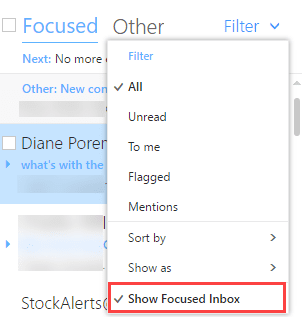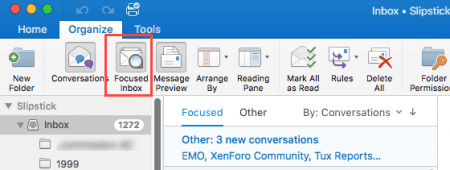

In other words, the Focused Inbox algorithm, can decide that specific E-mail address is not important, and this E-mail will not “sent” to the Focused Inbox view. In some scenarios, the Focused Inbox algorithm, can decide not to classify E-mail messages as an E-mail that will be sent to the Focused Inbox view. When using the Focused Inbox option, the Exchange server who manages the user mailbox, “decide” according to an internal algorithm to “move” (or not to “move”) a specific E-mail message to the Focused Inbox view. SECTION D: Using Exchange Online rule to send specific E-mails Focused Inbox Get-MailBox -Filter '(RecipientTypeDetails -eq "UserMailbox")' | Get-FocusedInbox | Select MailboxIdentity, FocusedInboxOn, FocusedInboxOnLastUpdateTime | Export-CSVc : \ temp \ "All Exchange user mailboxes that their Focused Inbox option is Enabled.CSV" – NoTypeInformation -Encoding utf8 Exchange remote connectivity analyzer Exchange remote connectivity analyzer.Exchange Online mail connectors Exchange Online mail connectors.In-place eDiscovery & Hold In-place eDiscovery & Hold.PowerShell command reference PowerShell command reference.PowerShell – Office 365 PowerShell – Office 365.Exchange 2013 coexistence Exchange 2013 coexistence.Autodiscover infrastructure Autodiscover infrastructure.Exchange server architecture Exchange server architecture.Another possible option is malware that abuses our infrastructure and sends outbound spam on behalf of our users. Most of the time, the cause for Internal spam E-mail or outbound spam E-mail is a lack of awareness of our users. For this reason, another name that used is – outbound spam E-mail. The term Internal spam E-mail describes a phenomenon in which the spam E-mail sent by our organization users.

Internal spam E-mail Articles that review the subject of – Internal spam E-mail.


 0 kommentar(er)
0 kommentar(er)
